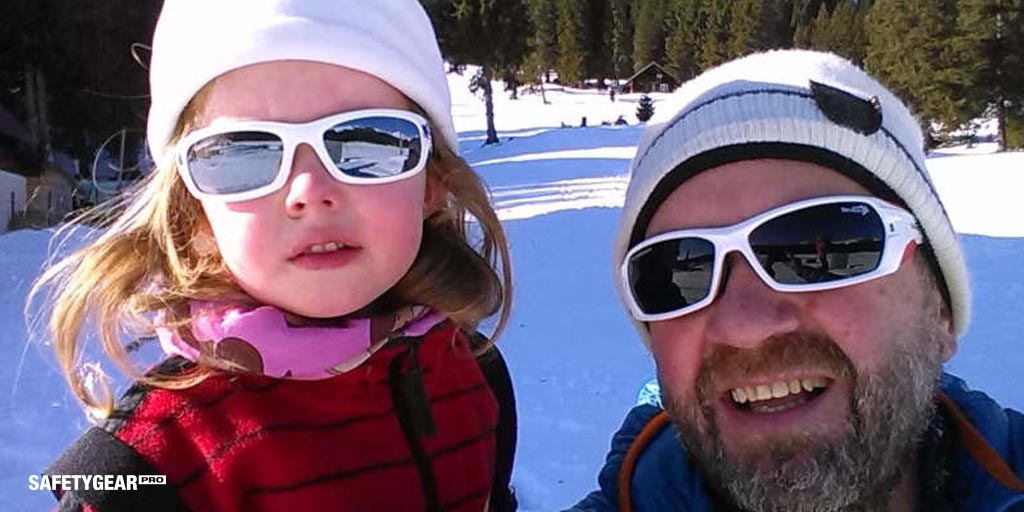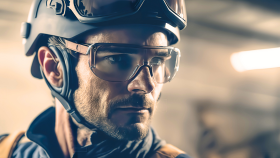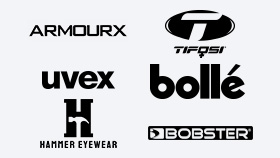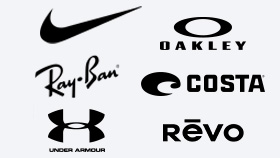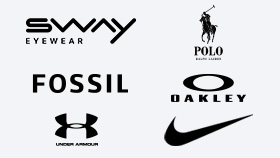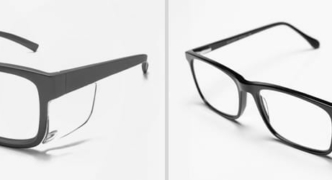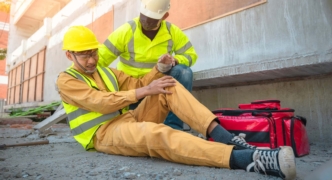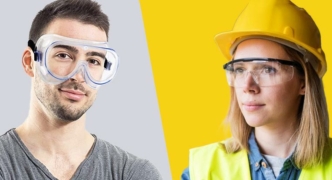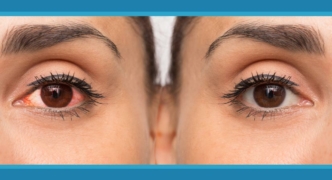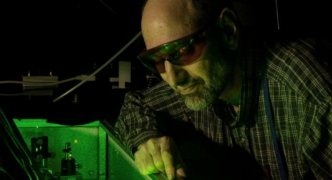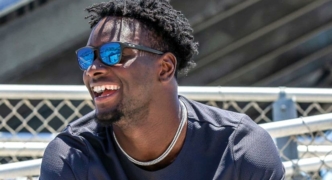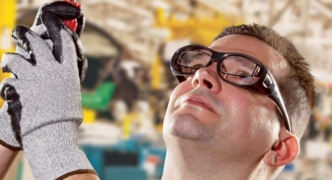Sports and Eye Safety: Tips For Parents and Teachers

Did you know that almost 3% of children under the age of 18 in the United States are blind? You probably also didn’t realize that eye injuries are the leading cause of blindness in these children and that most of these injuries occur while they are playing sports. Luckily, wearing prescription sports glasses when playing sports can prevent 9 out of 10 eye injuries for children.
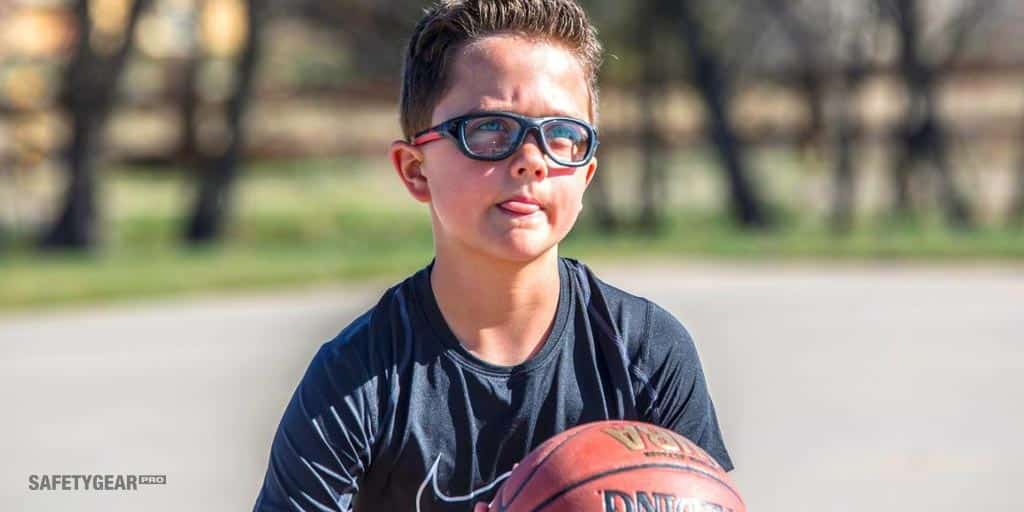
What Is Protective Eyewear?
Protective eyewear is a type of eyewear that is made using polycarbonate. Polycarbonate is an ultra-strong type of plastic that is resistant to impact or shattering while also protecting the eyes from the sun’s ultraviolet rays. There are many different types of protective eyewear available for sports players, including face guards, safety goggles, and special prescription glasses designed specifically for use when playing sports.
If your child plays sports, it is imperative that you purchase him or her protective eyewear. Regular sunglasses, eyeglasses, or contacts cannot protect your child on the field or on the court. If you do not wish to purchase special prescription glasses, you can also purchase safety goggles that are made to fit over traditional glasses.
When Do Kids Need To Use Protective Eyewear?
Typically, your child should wear protective eyewear or sports goggles anytime that he or she will be playing sports, whether practicing or in a competitive game. Most sports can be divided into three categories: low risk, moderate risk, and high risk of eye injury.
The sports with the lowest risk of injuring the eyes include diving, road biking, swimming, track and field, skiing, and gymnastics. Those with a moderate risk of eye injury include badminton, soccer, tennis, tackle football, and golf. There are also several sports that carry a high risk of injuring the eyes. They are baseball or softball, fencing, mountain biking, racquetball or squash, paintball, hockey, and basketball.
Keep in mind that most youth sports leagues do not have anything in the rules that require children to wear protective eyewear when they are practicing or playing a game. For this reason, it is important for parents, coaches, and teachers to take the lead and require protective glasses for sports. Doing so mitigates the risk of eye injury while still allowing children to play the sports that they enjoy.
What Kind of Protective Eyewear Do Kids Need?
The type of protective eyewear a child needs depends on which sport or sports he or she plays. Kids that play water sports, such as surfing, waterskiing, or water polo, need safety goggles made with polycarbonate lenses that will protect them in and out of the water. If a child plays tackle football or hockey, he or she will need a helmet that allows for the attachment of a polycarbonate face guard. Face masks are another option. Kids who play baseball or softball should also use this type of eyewear when batting.
Kids who need the most protection are those who play basketball, racquetball, squash, or who like to go mountain biking. They need safety goggles with polycarbonate lenses. Baseball and softball players also need this type of protection when fielding. The most dangerous types of sports for the eyes are fencing, paintball, and lacrosse, as well as being a goalie on a sports team. These kids may need even more protection for their eyes. If you aren’t sure which option is best for your kids or team members, ask a pediatric eye doctor for recommendations.
FAQs
1. What Are Some Good Ways To Get Kids To Wear Their Protective Glasses?
One problem parents and coaches face is that many children don’t want to wear their regular glasses, let alone the protective eyewear that they need to play sports safely. There are some things that you can do to try to interest them in wearing glasses, though. First, let them go with you to pick out their own protective eyewear. When a child gets the chance to find frames and lenses that are comfortable and that look good on them, they are more likely to want to wear them when they need to. Another way to keep them interested in wearing their protective eyewear on the field or court is to let them wear it around the house first. This gives them time to get used to how it feels on their face as well as to get used to looking through them compared to how things look with the naked eye. Finally, if you are supposed to wear glasses or if you play sports, wear your own glasses and protective eyewear around the kids to show them the importance of it.
2. Do Children Need Special Protective Eyewear To Play Sports in Cold Weather?
While your child doesn’t necessarily need special protective eyewear to play sports outside during the cold months, it is important that you choose goggles or other eyewear that is made with the latest technology. Modern protective eyewear has two layers of lenses. The additional layer keeps the interior lens from fogging up when in cold weather. Goggles that only have a single layer create a water vapor that condenses into the lens and creates a fog that makes it difficult to see. Ensure, however, that you buy high-quality dual lenses. Cheaply made eyewear can cause water vapor to get trapped between the two different lenses and is nearly impossible to remove.
3. How Often Should You Replace a Child's Protective Sports Eyewear?
If your children do not need prescription sports eyewear, then you can use the eyewear as long as it is in good condition and continues to fit comfortably. Keep in mind that younger children may need eyewear replaced more often since they are growing faster. If your children require prescription lenses for their protective eyewear, then you should replace them every 1-3 years or when their prescription changes. A child that wears prescription lenses should have an eye exam at least once per year to ensure the prescription is still working properly.
4. How Do You Clean a Child's Protective Sports Eyewear?
There are two types of methods for cleaning your child’s protective sports eyewear: dry cleaning and wet cleaning. Dry cleaning is useful for removing fingerprints or slight smudges. Use a clean, dry, and soft cloth to gently wipe away smudges. If you cannot remove the spots entirely, breathing on the lens can help to remove tough spots. Avoid using excessive pressure as it can cause the lenses to become scratched. If the eyewear is excessively dirty, you can use lukewarm water and mild soap. Avoid using chemical cleaning agents, and if the inside of the lens has an anti-fog cleaning, avoid wiping it down.
5. What Should I Look For in a Child's Protective Sports Eyewear?
Consider the lenses as well as the fit and comfort when choosing protective sports eyewear for a child. Polycarbonate lenses are shatterproof and protect the eye from serious injury. They typically also have scratch-resistant coatings and can provide up to 100% UV protection. The eyewear should have padding around the temples and on the bridge of the nose to prevent rubbing and ensure the eyewear stays in place. Consider a wraparound band to further ensure they stay in place while your child is participating in sports.
Get Your Child’s Protective Sports Eyewear Today
It’s never too late to start protecting your child’s eyes. Check out Safety Gear Pro to find prescription sports glasses for your little ones today. We provide a wide range of styles, sizes, and prescription options for children who play all kinds of sports.
